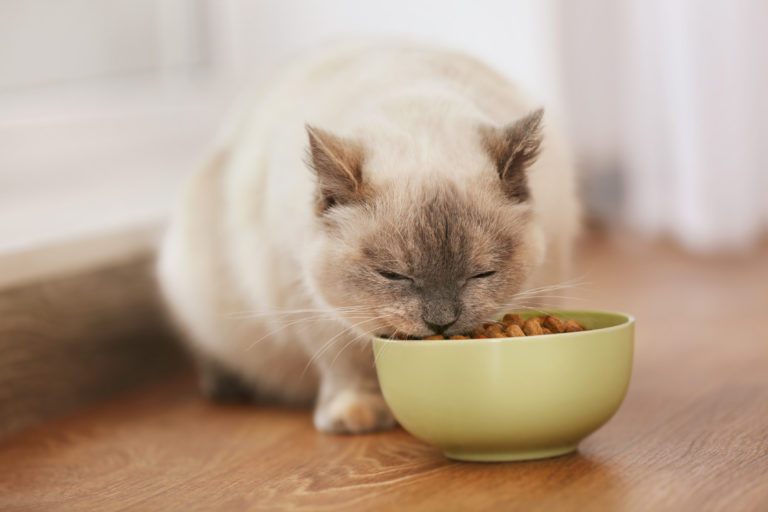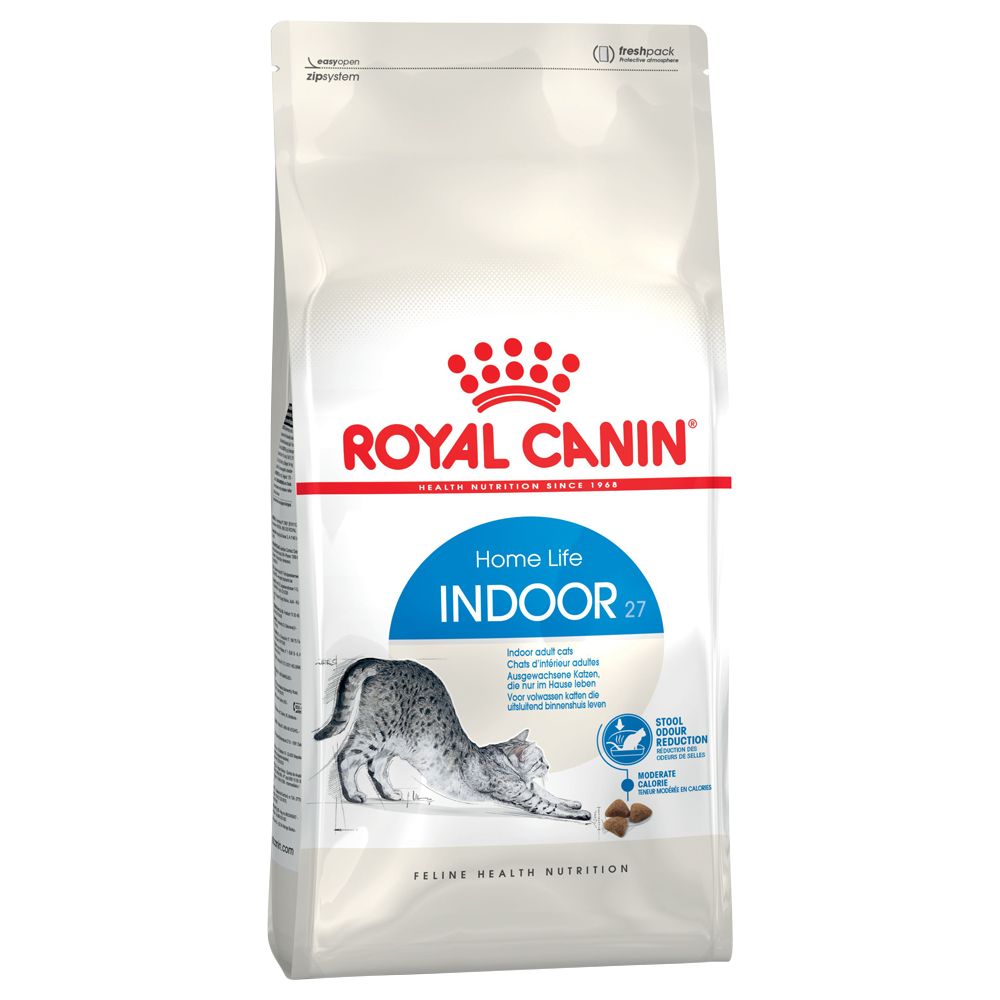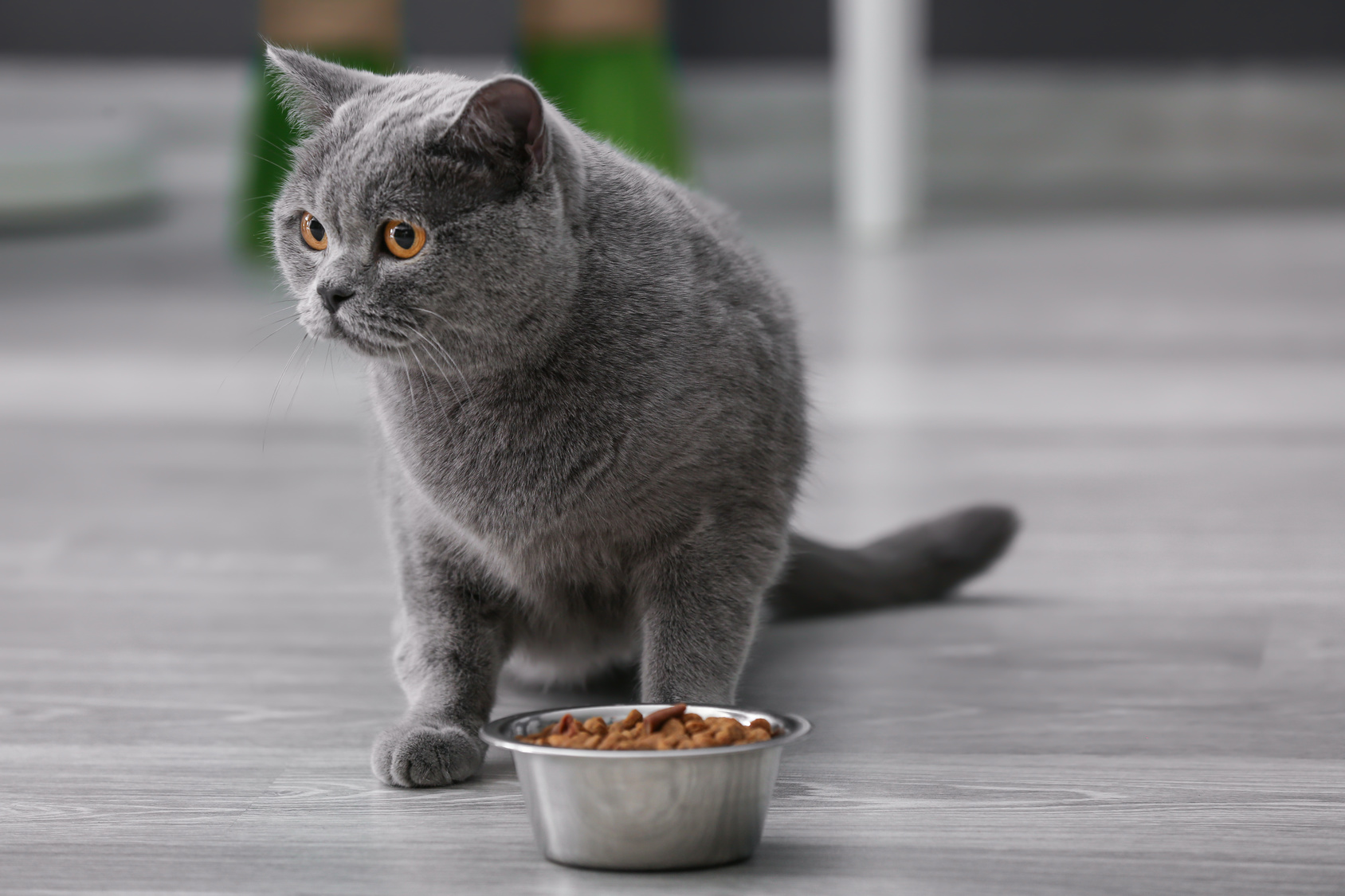How to Determine the Right Amount of Food for Your Cat
Some cats always seem to be hungry. But how much food does a cat need per day? This article helps you to find out the right amount of food for your cat.
Our domestic cats are still predators on the inside. However, there are many reasons why we may choose to keep our cats indoors. For example, if your home has no garden attached or if you live close to a busy street, posing potential dangers to your cat – a risk that none of us are willing to take. Infectious diseases such as feline immunodeficiency virus (FIV) can also be a reason for keeping your cat indoors, needing to reduce the risk of spreading the illness to other animals. Last but not least, there are some cats that just do not like going outdoors! Some cats are much happier lounging sedately around the house. Whatever the reason, your indoor cat will need a different kind of food from one that is running around outdoors all day.

© Africa Studio / stock.adobe.com
Cats love to be stimulated. This is perfectly possible indoors as well as out! Of course, chances to chase mice or birds are few are far between indoors and there is less chance of a stand-off with next door’s cat, but intelligence toys and playing together with people can also keep your cat engaged. Scratching posts, climbing trees and hiding places can offer your cat a range of challenges, play and fun from the comfort of home. Nevertheless, it is only natural that an indoor cat is going to move around much less than its outdoor cousins. There is no need to prowl around protecting its territory from intruders and there are rarely wide-open spaces to run through inside a house, meaning far fewer miles are clocked up than for outdoor cats. The majority of time will be spent resting and cleaning, meaning your house cat is going to have a significantly lower calorie requirement. Less chasing but more eating can lead to a very fat cat! Appropriate nutrition needs to take this into consideration.
You’ll find the suggested products in the video under the following links:
Royal Canin Indoor 27 (Dry Food), Concept for Life Indoor Cats (Dry Food), Cat Treats Cosmos Snackies, Trixie Protective Fencing for Tilting Windows, Cat Safety Net, Brooklyn Snuggle Bed, Natural Paradise Cat Tree
If you’re looking to feed your cat fewer calories, your first instinct might be to simply cut its food quantity in half. Unfortunately, it is not that simple. House cats may need fewer calories but they need just as many vitamins and nutrients! Even if your cat is a little larger around the waist than you would like, drastic diets can be dangerous, as cats are extremely sensitive when it comes to rapid weight loss. Radical fat loss can lead to hepatic lipidosis, also known as “fatty liver”. A far better solution is choosing a food range that is tailored specifically to the needs of indoor cats. These meals are low in calories but still rich in all the nutrients your feline friend needs. Many of these indoor cat food ranges also offer added benefits, such as added L-carnitine to help support weight maintenance. A well balanced calcium/phosphorus ratio is also vital in ensuring the minerals in your cat’s body are at optimum levels, which in turn can help to reduce the risk of urinary and kidney stones building up. High-quality protein helps to leave your cat feeling full whilst also maintaining muscle mass, even if your cat is less active. Food for indoor cats can also have dental benefits, helping to keep teeth clean, as well as helping to move swallowed hairs through the system.
 © Royal Canin
© Royal Canin
Give your cat tailored nutrition:
Even specialised foods like this need to be species-appropriate for carnivorous cats. An alarming study carried out in the USA showed that many special diets do in fact neglect the overall health of your cat. As carnivores, cats need to have plenty of high-quality protein in their diet. Carbohydrates should make up just a small amount of the food, with meat being top of the ingredients list. Vegetable by-products and grains should play the smallest roles in cat food and you should be aware that “meat and animal by-products” can refer to a whole range of body parts, including things such as liver, spleen, hair and horn.
That is why you need to choose a high-quality specialised food product, which is 100% tailored to your cat’s specific needs, as well as keeping nutrition at the heart of the dish!
 © Leonid / stock.adobe.com
© Leonid / stock.adobe.com
Some cats always seem to be hungry. But how much food does a cat need per day? This article helps you to find out the right amount of food for your cat.
Summer is the peak season for refreshing ice cream, and cats enjoy it too when it's hot. Would you like to surprise your cat with some ice cream for a change? We will clarify whether ice cream is dangerous for cats and show you how to make your own healthy cat ice cream.